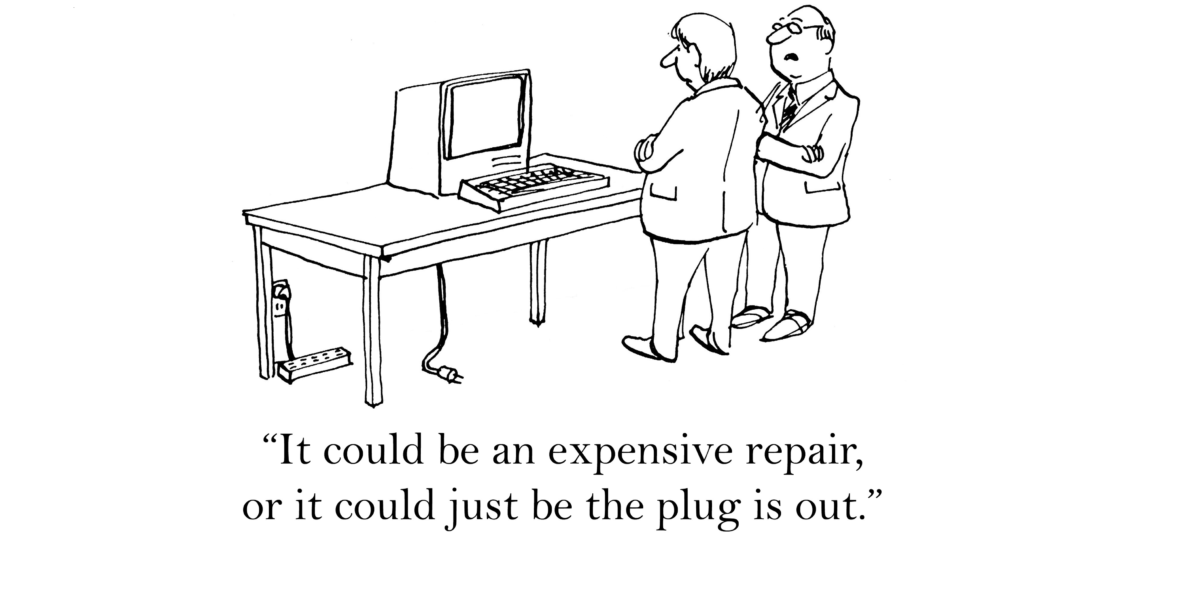“If you define the problem correctly, you almost have the solution”
– Steve Jobs

Ahh! If the solution was just that easy!
The real question is, how did we get ourselves in this position in the first place. Too often, we look for quick fixes instead of defining the problem. If we don’t understand how and why the problem evolved, we may be operating on an incomplete resolution. You may also be treating the symptoms of a problem rather than the actual underlying causes contributing to the issue, leading to a potential recurrence.
When an incident or breakdown in service occurs, especially when an issue has a negative impact on your client, consider conducting a root cause analysis (or RCA). Root cause analysis is a strategic technique designed to unearth the rea – and often unknown – reason why a problem is occurring. Many problems, even simple ones, are not clear-cut.
Take, for example, the comic that depicts the computer being unplugged. The solution may appear to be to plug the cord back into the outlet. However, to minimize the plug from being out of place in the future, we should find out why the problem occurred in the first place.
RCA determines:
- What happened
- Why it happened
- What to do to reduce the likelihood that the problem will happen again
RCA considers three basic types of causes:
- Physical causes – something material, tangible, or concrete stopped working (or was missing).
- Human causes – problems caused by a human being or lack of human intervention is the cause.
- Organizational causes – Systems, processes, or policies used to make the decisions or do the work did not or no longer work.
By targeting these systems that could potentially be the reason for hidden flaws or breakdowns can help identify the underlying reasons explaining why something is going wrong.
The systematic process for identifying the “root cause” of a problem is to:
- Identify the issue
- Define the problem
- Understand the problem
- Identify the root cause
- Initiate corrective action
- Assess the effectiveness of improvement
- Standardize and control the process
- Realize and reflect
There are many tools to support the process of understanding and solving problems. To answer the question of why a problem occurred in the first place, practitioners may use methods such as:
- Cause and Effect Diagrams
- 5 Whys framework
- Kaizen
- FMEA
- CATWOE
Integrative Management Solutions specializes in identifying problems and providing solutions that strengthen systems that minimize reoccurring challenges. We don’t just examine the three basic causes and apply the RCA method. We determine what tool(s) are appropriate to conduct the investigation. We ask the right questions to get to the root cause of a problem. Allow our skilled consultants to help you focus on the real causes of your problems.
Posted by Dr. Drena Valentine to LinkedIn on April 13th, 2021


Recent Comments